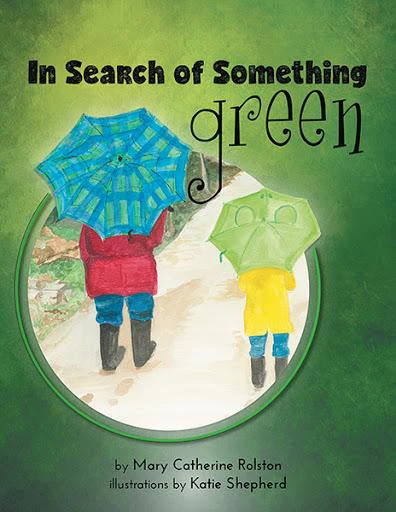In Search of Something Green
Matthew heads to the cottage for a week with his grandparents, Grandpoobee and Nanabanana. Will he overcome his fears of swimming in the lake and jumping off the dock? Does his nightly search for something green bring him luck in overcoming his fear?
“I’m on a search for something green,
A four-leaf clover that is rarely seen.
It is said that for those who find such a charm
That luck will stay and protect from harm.”
Available at:
The Backstory
Years ago, our family of four would vacation at my parents’ cottage in the Laurentians in the summer. While there I would often look through masses of clover in search of four-leaf clovers. At the shore was a large dock, which allowed us to dive into the lake. During this one summer visit, our two sons, Matthew, a seven-year-old, and Andrew, a four-year-old , would excitedly head to the dock to jump off and practice their swimming skills learned during swimming lessons at the local pool back home. Andrew was tiny and fearless and didn’t think twice about jumping or diving off the dock. Although older, Matthew, who’d managed to successfully get through his swimming lessons, was terrified of the lake. Possibly this fear was rooted in his cautious personality, that he was exceptionally tall for his age and his height caused a long distance before he reached the water, or that the pressure to compete with his brother created a lathering cloud of anxiety. Try as we might, his father and I couldn’t help break through his fears. It was my father (yes, we called him the Grandpoobee) who managed to get through to Matt, gently coaching his every day with different strategies. My mom (yes, we gave her the nickname of Nanabanana), who also would sit by the sidelines and offer suggestions and sometimes critique my father to let Matt be, reassured Matt that in time he’d be able to dive off the dock. Hence, it was watching the power of this precious bond between grandson and grandparents that this story was born. We are so grateful for the role my parents played in helping our sons develop into the fine young men they are today.


About the Illustrator
Katie Shepherd resides in Winona, Ontario, and is an artist, piano teacher, mother of three, grandmother, and has been a leader of a variety of ministries within her church. Twenty years ago while Mary Catherine was teaching her three children over a three year period, she gave her story to Katie to read. A couple of months after, not hearing any feedback, Mary Catherine, asked Katie what she thought of the story. Katie grinned and replied, “I love it and I’m illustrating it!”. A thrilling moment to say the least for MC. Upon completion of the illustrations, Katie gifted all the illustrations to MC. MC vowed to work at getting the story published. Now twenty years later MC has published the story and returned the illustrations to their rightful home. When MC arrived at Katie’s doorstep with the water colours in hand, Katie said, “But I gave these to you.” MC responded , “They need to be with your family. They are a part of your family history (Katie used the likeness of her son, Cody, who just happened to look a touch like my son, and her husband Chris’ grandparents, when painting the characters).” Katie’s very generous gift of the heart made this final book possible. A truly remarkable and giving woman.
Guide for Reading: PRC
Predictions, Reflections and Connections
Predictions
Predicting is an essential tool when developing as a strong reader. This story has been written to hook the young audience in engaging in predictable events.


Reflections
Reflecting throughout a book makes the story extra personal and come alive. It reflects a reader’s level of comprehension. A more thoughtful and complex reflection and connection reveal a higher understanding of the story. They also help reinforce one’s memory sequence which forms the basis of a retelling with more detail and reference to nuance. A simple and literal retelling reflects a more simplistic understanding.
Connections
Making connections facilitates a deeper understanding of a story through making inferences, noting details and relating them to prior information. It is seeing, linking, and articulating other topics and events to the story. The reader is applying this reading experience to other learned information. Often when making connections the reader will arrive at exciting new insights that extend beyond the literal story.



